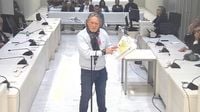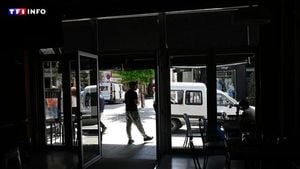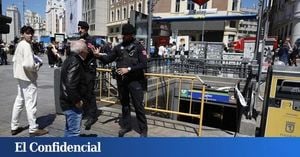The highly publicized trial of José Ramón Prado Bugallo, better known as Sito Miñanco, concluded on March 21, 2025, at the Audiencia Nacional in Madrid after four intense months of hearings. Miñanco, a notorious narcotrafficker, has faced serious allegations, culminating in a request from the Prosecutor’s Office for 31 years and six months in prison due to numerous charges related to drug trafficking and money laundering.
The trial involved approximately fifty defendants, including lawyer Gonzalo Boye, who is accused of aiding Miñanco's network in laundering undercover finances. The proceedings revealed Miñanco’s deep entanglement in the drug trade while ostensibly on third-degree parole from an earlier sentence of over 16 years in prison.
At the heart of the accusations is the 'Operación Mito', an investigation initiated in 2016 aimed at dismantling a network allegedly orchestrated by Miñanco, which sought to introduce more than 4,000 kilograms of cocaine into Spain through various operations, including attempted shipments from South America. As the trial drew to a close, Miñanco seized his final opportunity to address the court, attacking the credibility of both the police and the prosecution.
During his last statement, Miñanco criticized some police officers, alleging that they aimed for a conviction at any cost, disregarding the truthfulness of their reports. He alleged, "I have been targeted by police looking for any way to ensure my conviction, regardless of the facts." This bold claim captured attention as he outlined his perspective on the supposed errors within a police surveillance operation that led to his indictment.
Attempting to debunk the evidence presented against him, Miñanco employed intricate calculations based on nautical miles to argue it was impossible for the speedboats linked to his operations to have reached the specified locations in the Atlantic Ocean to collect the cocaine from the ship Thoran. "The laws of physics make it impossible to support what the police claim about the speedboats," he asserted, challenging the prosecution’s narrative with meticulous detail.
Throughout the proceedings, Miñanco maintained that specific conversations attributed to him in intercepted recordings were fabricated, further discrediting the police's case against him. Repeating accusations made in earlier sessions, he argued the surveillance had missed the mark, recounting an instance where he was incorrectly placed at a shipyard when he was in fact sleeping at the CIS facility in Algeciras.
Gonzalo Boye, implicated for his role in facilitating the alleged laundering of 890,000 euros confiscated at Barajas airport, also took a moment to express his views during the final remarks. His defense strategy, similar to Miñanco’s, centered on portraying weaknesses in the prosecution's assertions and questioning the officers' motives during the investigation. Boye’s involvement in this trial further underscores the extensive reach of Miñanco's alleged operations.
Manuel González Rubio, identified as a ‘human courier’ purportedly associated with Miñanco's network, took the stand to apologize to law enforcement officers injured during his capture. Asserting his ownership of the seized funds, he attempted to distance himself from Miñanco’s enterprise. "I regret any harm caused during my arrest and urge that the funds be used for compensation for the officers involved," he stated, placing the financial blame squarely on his shoulders.
Moreover, the prosecutor's office presented a hefty indictment against Miñanco. The demands include not only substantial prison time—31 years and six months—but also a staggering fine of 950 million euros. For Boye, the prosecution seeks nine years and nine months in prison alongside a 2.7 million euro fine.
The case’s narrative is bolstered by substantial evidence, including the notorious 2017 seizure of 3.3 tons of cocaine on the ship Thoran, intercepted in international waters near the Azores, and another 615 kilos found in a warehouse in the Netherlands shortly after. These operations form the backbone of the prosecution's argument, portraying a cohesive and formidable drug trafficking syndicate centered around Miñanco.
The 'Operación Mito' investigation has not only uncovered details surrounding Miñanco's alleged ventures but has also laid bare a vast web of international drug trafficking linking South American suppliers directly to European markets. During the trial, it became clear that Miñanco had continued his narcotics involvement with relative impunity, leveraging the perceived leniency of his third-degree prison status to skillfully orchestrate his illicit operations.
As the trial draws to a close, the implications of this case extend well beyond Miñanco and his immediate associates. It raises profound questions about the effectiveness of law enforcement in combating organized crime and the integrity of legal processes when handling highly complex cases involving drug trafficking networks.
Awaiting the court's verdict, which could culminate in his third conviction impacting his already notorious legacy, Miñanco remains defiant, maintaining that he has always lived a life opposing drug trade involvements—a statement many will be skeptical of as the court prepares to deliberate on this monumental case.









